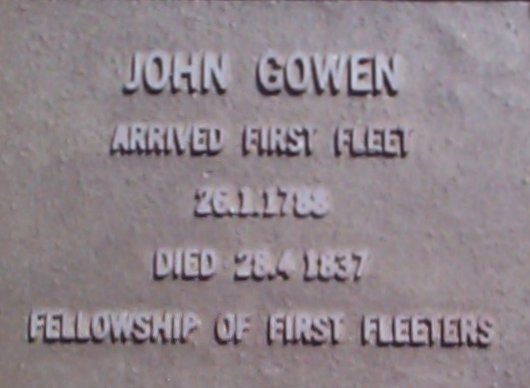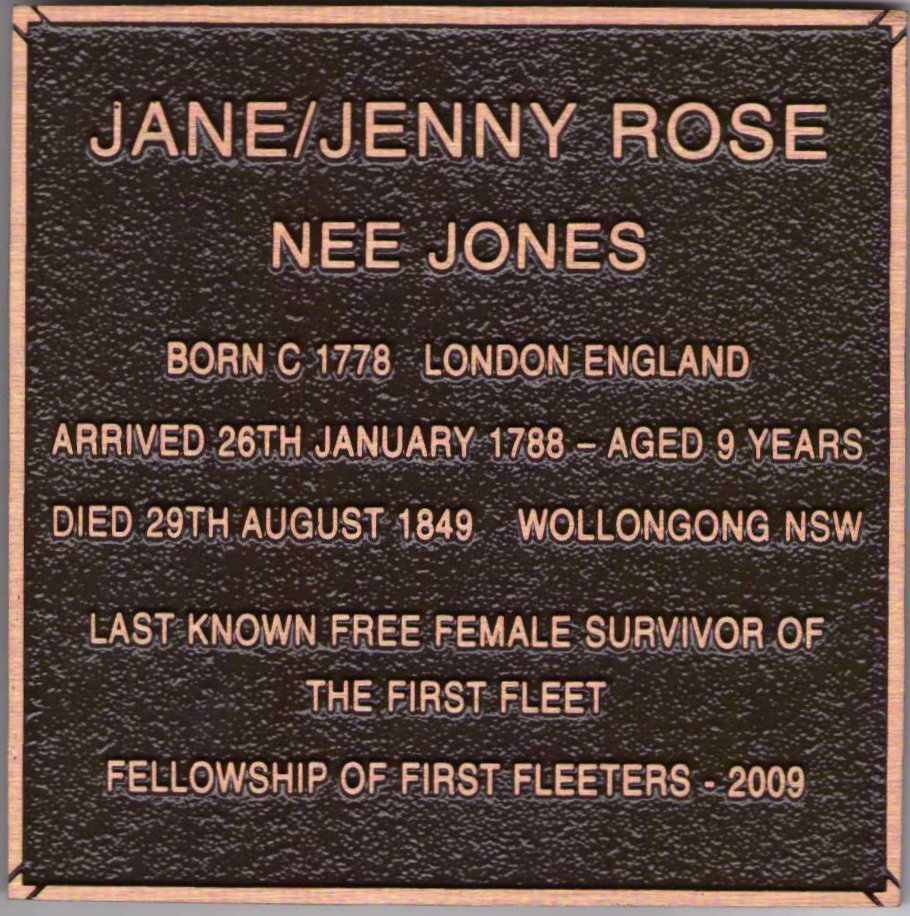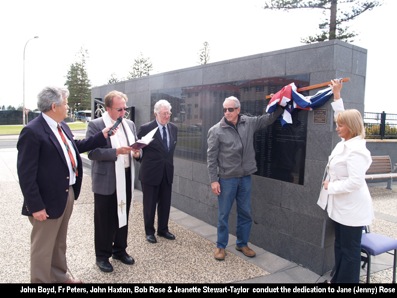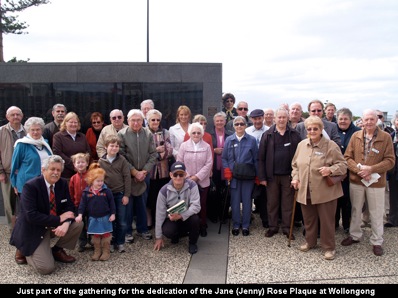|
History
First Fleet in Sydney Cove 1788
The voyage of the First Fleet from Portsmouth to the Great
South Land ranks as one of the greatest achievements in the history of
sailing. True to his responsibilities, Arthur Phillip guided his fleet
through rough seas and foreign ports with unmatched skill.
He deemed Botany Bay unsuitable and gained a viable place
to establish a settlement at Sydney Cove where he founded a colony beyond
the limits of the unknown.
One could say the colony began as large scale experiment. A
cutting from a northern stock was planted on this temperate shore and left
to itself All outside influences were cut off; the experiment was
isolated. The soil promised little; the climate offered a fair field.
These thousand odd people were set down in neutral country and with
centuries of civilisation behind them; they had to begin at the beginning
in a new physical environment. They had to solve the problem of living of
living with an alien soil, and of living with one another. They had to
create their world, spiritual as well as material, from scratch. There was
loneliness. They were bounded by sky and sea and a hinterland as
impenetrable and more unkind than either. How to live together in the
harsh environment was something the colonists had to discover.
Helensburgh Historical Society
Governor Phillip guided the settlement through periods when
starvation was likely and encouraged cultivation. The early days saw
contact between Europeans & Aboriginal people marked by curiosity on both
sides and a desire to live together. Unfortunately for some; relations
broke down into confusion, anger & open hostility. Governor Phillip had
demanded kindness towards the Aborigines, a policy he maintained even
after he was speared in the side.
Albeit the privations, there can be no doubt the First
Fleet Arrivals developed the ability to cope with an entirely different
life in a new and sometimes harsh and unfriendly environment. The First
Fleet Pioneers had written the first of many pages that would live forever
in the history of Australia.
Compiled by Jean Mortimer,
Sources of information;
National Museum Canberra, Phillip of Australia by: MB
Eldershaw, My memory of history studied.

Australia.
Australia- the word
Australia is Latin for southern. For many years before its settlement the
Europeans posited a great land in the south, which they called Terra
Australis. With the Dutch discoveries of the 17th century however the
continent was named "New Holland".
This remained the name of the area until Matthew Flinders
published a book on his explorations entitled
A Voyage to Terra Australis
In a footnote to this work Flinders stated that he
preferred the name "Australia" .
Macquarie read this and began to use the name in his
official correspondence. The name "New Holland" persisted in some quarters
until the 1840s.

First
Fleeter Buried on the South Coast.
John Gowen
HMS Sirius
Corporal of
Marines
26th
January 1788
1791
John Gowen became a marine settler on Norfolk
Island.
1794
Returned to Sydney and joined the NSW Corps as a non-commissioned officer.
1880
Resigned and became Official Government Storekeeper.
1805
John married convict Ordery Appleyard. John
had been granted land in Sydney, Liberty Plains,
Bankstown,
Prospect Creek, Minto and
Petersham Hill.
Moved to
Liverpool on the corner of Elizabeth
and George
streets.
1819 Orderly
passed away.
1821 John
married convict Mary Wood.
1827 Mary
passed away.
1837 John Gowen died at Kiama age 74
while staying with his daughter
Frances.
Buried at Christ Church Anglican Church
Kiama.
John Gowen
born circa 1761 died 28th April 1873.
By Ordery
Appleyard had the following children.
|
Mary
Ann
John
Frances
Elizabeth
|
b
17-5-1806
b
circa 1807
b
15-12-1810
b
circa 1813
b
24-4-1816 |
By Mary Wood
no surviving children.

Jane/Jenny
Rose (nee) Jones
Jane Jones (Jenny) was born in
England circa 1778,and came free on the First Fleet in 1788 with her
mother Elizabeth Evans (alias Jones) on the 'Lady Penrhyn'.
Elizabeth a 29 y/o, had been
transported for 7 years for the theft of 3 pounds of tea from a
shop.
She was nine years old,
when she arrived with the First Fleet on 26th January
1788
On 4th March 1790 the
ship 'Supply' transported Jane (aged 11) and her mother Elizabeth
Evans to Norfolk Island.
(* Note Jenny Jones was on
Norfolk Island at the same time as 13 y/o Mary Wade, who was sent to
Norfolk Island on 1st Aug 1790 on the "Suprize". Mary
Wade became Mary Brooker. She is buried in Pioneer Park Wollongong
(The Old Church of England Cemetery, Kembla & Banks Sts). Our Prime
Minister Kevin Rudd is a descendant.)
They returned to Port Jackson in
1794, and her mother Elizabeth was granted 20 acres at Concord on 19th
November that year. From at least 1794 onwards Jenny's mother was
recorded in Colonial Records as Elizabeth Jones
Elizabeth later sold the land to
James Wilkinson, and then held a lease from 23 rd November 1797 in
Sydney (a lot 60ft x 100 ft). This allowed her to support herself
and Jane by keeping 9 pigs.
On 24th May 1800, when
she was just 21 y/o Jane married Thomas Rose junior at Sydney and
they had two children Thomas c 1800 and William c 1802.
Thomas had arrived on the Bellona
in 1793 aged 14 years, with his family.
Jane and Thomas parted in 1803
when he went back to England with his brother Joshua on family
business. It is suggested that Thomas went to the Napoleonic Wars.
However he was away for around 3
years, and did not return to the Colony until 1806.
When Jane's husband Thomas Rose
finally returned from England in August1806 on the Lady Magdelina
Sinclair , he found the Jane now aged 27 y/o, was now living with
the emancipated convict Matthew Conroy ( Friendship 1800) and they
had four sons. Two of those sons are believed to be Thomas & William
Rose
Thomas then formed a de facto
relationship with Ann Crew, who born him 14 children between 1813 &
1839.
In 1810 Jane's mother Elizabeth
now aged 51 years married 45 y/o James Vandercom (Bardwell 1798)
In 1814 Jane is noted as being
the wife of Thomas Jones, but not living with him.
In 1818, Jane's son Thomas, then
aged 18 y/o, was granted 60 acres at South Bulli
Jane's mother Elizabeth died in
Sydney on 27th September 1820-aged 60.
By 1825 as Jane Rose, she was
listed with convict James Walsh (Atlas 1802) and a two-year-old
child.
In the 1828 census she was
recorded as wife of James Walsh (both Catholics), at Airds, where he
was a landholder. They had 55 acres, of which 50 are cleared and
cultivated, plus 2 horses, 24 cattle and some sheep.
They also have 2 assigned
convicts living/working for them- James Chard, aged 20 and Henry
Morton, aged 59 (Duke of Portland 1806).
In addition there is two
additional labourers who were born in the colony on the property-
John Ryan, aged 20 & Edward Whittle aged 17.
Jane's son Thomas Rose now 28 was
also labourer on the property.
Jane's son Thomas left Australia
in 1829 and was not heard from again.
By the 1830's they had moved to
Bulli & Jane then ran his farm at Bulli until her death in 1849.
In 1831 James was a signatory to
an address, published in the Sydney Gazette on 1st
February to George Sleeman Esq, the Resident Magistrate of Illawarra
upon his retirement from that office. William Rose, and Edward
Whittle also signed the address.
James Walsh/Welsh is listed in
Illawarra on the 1833 road petition.
He also appeared on the
schoolhouse petition of 7th August 1840.
John Jones son of Jane Jones who
was baptised, at the age of 16, in the Catholic church at Wollongong
in 1839 may have been the two year old child recorded in 1825.
In 1839 Jane was granted 60 acres
at Bulli- This became Seafield Farm
Son William married Bridget Neil
in 1840 at the Roman Catholic Church Wollongong. They had 4 children
Elizabeth (1841), Jane (1842), Thomas James (1844) and Johanna
(1845)
William died 25th
June1845 and is also buried in the Old Roman Catholic Cemetery
Jane Rose died at Wollongong on
or about August 1849 and was buried on 29th August 1849,
aged 70, with her son William.
She was described in a Police
Report dated 10th September 1849, into her death as Jane Rose
commonly known as Jane Walsh late of Crown St Wollongong shopkeeper
departed this life on or about the 29th day of August
1849.
Jane/Jenny Rose (nee Jones)
was the last known Free Female survivor of the First Fleet in
Australia.
Compiled by John
Boyd
Fellowship of
First Fleeters
Woolloomooloo NSW
2009.
Sources:
-The Founders of
Australia- Mollie Gillen Library of Australian History 1989
-Settlers &
Convicts of the BELLONA 1793-a biographical dictionary- Megan Martin
1992
-Wollongong Old
Roman Catholic Burial Ground Wendy E Nunan 2005
-The Rose Family
of the Bellona-The Thomas and Jane Rose Family Society 1995
-Convicts to NSW
1788-1812- society of Australian Genealogists 2002
-Census of NSW
1828- Keith Johnson & Malcolm Sainty 2001
The
JANE ROSE PLAQUE CEREMONY
was conducted on Saturday 10th October 2009,At Andrew
Lysaght Memorial Park- Lower Crown St Wollongong NSW


Albion Park / Macquarie
Rivulet.
Surveyor General Oxley, by
order of Governor Macquarie, on the 2nd Day of December 1816,
met the grantees of and located the first lands in Illawarra. Royal Marine
George Johnston from the First Fleet was one of the recipients.
George Johnston, Esquire,
Senior, (Major Johnston), 1500 acres (Macquarie Gift), on the west side of
Macquarie Rivulet.
1887 Across the Macquarie
Rivulet from Albion Park lived Mr. E.H.Weston. a grandson of Major
Johnson, the original grantee of Johnson's Meadows. Mr. Weston was a great
horse lover and breeder. He was particularly successful with his jumping
horses at all the district shows. At that time too, he was a prominent
member of the Illawarra Lancers (later Illawarra Light Horse), rising to
the rank of Major. From this body several volunteers went with the
Australian Light Horse to the Boer War.

The Broad Arrow
The Broad Arrow - used to identify property of the
government and probably best known on convicts' uniforms. Henry Sidney,
Earl of Romney, Master of Ordnance to William and Mary, was asked to mark
all government property to reduce theft. He chose to use his family emblem
which is a broad arrow, or Pheon, and this is still in use today by the UK
government 300 years later.

 |